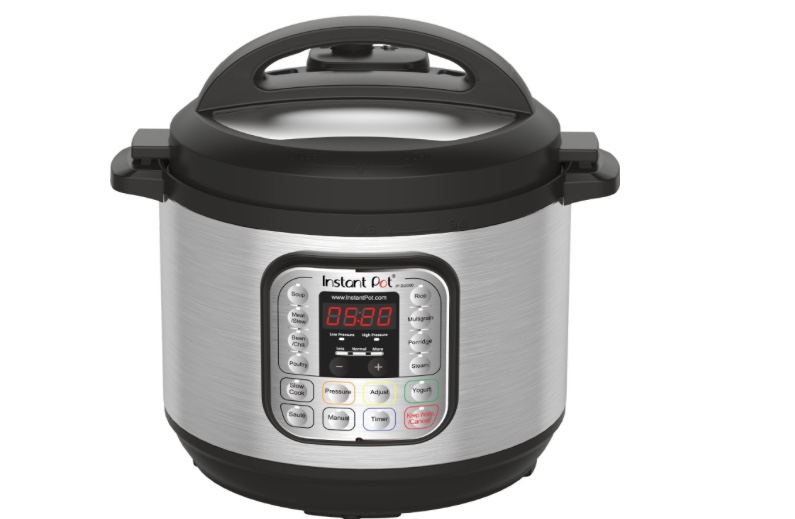The Many Reasons I Love the Instant Pot
- It steams green beans in 2 minutes.
- It makes bone broth in 2 hours. (see my recipe).
- It makes a succulent, falling-off-the-bone chicken in 30 minutes
- It has 90% more nutrient retention because foods are steaming under pressure.
- It will brown and sauté.
- It will cook rice (don’t do that it if you are totally paleo).
- It will make homemade soup in an hour that tastes like it has been cooking all day.
- It will create much less work time in the kitchen (more time for bubble baths).
- It will make your foods more digestible.
- It creates less of the harmful cooking byproducts (acrylamide’s, etc.)
- It will not leach toxins like ceramic slow cookers (lead, ugh).
- It keeps food warm and temperature safe for 24 hours.
- It is fully automated and features 6 or 7 different cooking programs.
- It runs at a very tight temperature, controlled automatically.
- It keeps your kitchen cool so YOU don’t lose energy.
- It keeps YOU cool so you won’t lose energy (lol).
- It totally cooks beef stew in 30 minutes.
- It totally cooks a 3# falling-off-the-bone beef roast in 45 minutes.
- It is much easier to clean up.
- It is a totally safe pressure cooker.
- It is super easy to operate (there is a small learning curve, but quite small).
- It’s FUN FUN FUN — YOU will love it !!!!!
How do Instant Pots work?
Pressure cookers work by letting steam build up inside a sealed environment. Lids lock down, sealing all that steam inside the pot. As trapped steam builds pressure, cooking temperatures increase along with moisture levels. This combination cuts cooking times up to 70% and equals substantial energy savings. With less time on the stove and less moisture lost to evaporation, pressure cookers are the cooking equivalent to energy efficient lighting.
Any cooking method that seals in flavors and bastes ingredients in their own juices is bound to taste good. Pressure-cooking does both these things and more. By reducing cooking time, pressure cookers ensure that foods are less likely to lose color and flavor. Shorter cooking times also improve the retention of nutrients.
Cooking Science
One study reported in the US National Library of Medicine by the National Institutes of Health determined that pressure-cooking preserves more ascorbic acid, beta-carotene, phytonutrients such as glucosinolates (helpful compounds found in cruciferous vegetables) and omega-3 fatty acids, that are beneficial for human health, than any other cooking method.
Another study from the Journal of Food Science showed that boiling and steaming broccoli caused significant vitamin C losses, while pressure-cooking helped retain more than 90%. The beneficial effects of pressure steaming vegetables did not stop there; it showed greater retention of vitamin B1, B2 and B6 at between 90-95%. The other cooking modalities they tested performed very poorly in comparison.
- Boiling vegetables showed 40% to 75% of the nutrients retained.
- Steaming in the traditional way showed 75% nutrients retained.
- Pressure steaming 90% – 95% nutrients retained.
Consistent results show that all cooking treatments, except pressure steaming, caused significant losses of chlorophyll and vitamin C and reduced the total soluble proteins and soluble sugars. There was also significant retention of the phytochemical and antioxidant activities of potatoes and other vegetables tested.
Science has just gotten to the point that nutrients can accurately be measured, but there still is little interest or money to made in “food science”. I just purchased my second Instant Pot so I can be making bone broth, vegetables and dinner at the same time. What a deal!
See my Amazon store for purchasing an Instant Pot, and there is essentially very little difference between the LUX Models and the DUO Models, except the DUO’s have the advantage of making yogurt.
http://onlinelibrary.wiley.com/doi/10.1111/j.1750-3841.2006.00258.x/abstract
https://www.ncbi.nlm.nih.gov/pmc/articles/PMC2722699/
https://www.ncbi.nlm.nih.gov/pubmed/26675866
https://www.ncbi.nlm.nih.gov/pubmed/24837935

